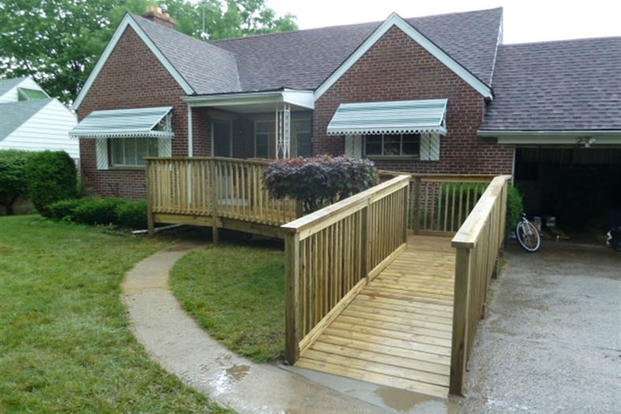Retired Army Capt. Ryan Kules is the Wounded Warrior Project’s Combat Stress Recovery director.
When American service members are injured in training or wounded on the battlefield, they often face unique challenges in recovering and adapting to their new state of ability.
I was wounded in combat on Nov. 29, 2005, in Taji, Iraq, when my vehicle was struck by an improvised explosive device.
In addition to losing two of my soldiers, Sgts. Mills and Hasse, I lost my right arm and left leg, and underwent years of physical and occupational therapy to re-learn how to navigate my environment.
I also had to make my environment more navigable by adapting my home.
The Department of Veterans Affairs' Specially Adapted Housing (SAH) program was one of the things that helped me. The program’s grants provide veterans like me funds (up to three requests per person, with an overall limit of $85,645) to assist with the purchase or construction of an adaptive home to help accommodate our disabilities.
This is a great benefit, but the law has two shortfalls.
First, it did not come close to covering all the costs of adapting my home.
After I retired from the Army, my wife and I found a house and used the SAH grant. At that time, the SAH benefit was just over $64,000, but the grant didn’t cover the more than $100,000 we needed to modify our home.
Second, the SAH grant meets the needs of veterans like me at only one moment in time.
As our family grew, we decided to move to a house that better met our changing needs. Since I had used the SAH grant to cover adaptations in our previous home, we paid more than $90,000 out of pocket to modify our current home.
As younger veterans like me grow, get married or have families, our needs in an adaptive home change dramatically.
This is also true for those whose disabilities get worse over time.
A veteran with a prosthetic leg might be fine to walk around their home when they are in their 30s, but they might require a motorized wheelchair when they become senior citizens.
It is important that this benefit evolves to meet the changing needs of disabled veterans and help them at various stages of their lives.
Additionally, veterans, like most Americans, tend to move around the country as their jobs relocate.
Disabled veterans already have a higher unemployment rate than their civilian peers, so improving this benefit would also contribute to greater financial stability and economic empowerment for veterans and their families by ensuring their homes meet their needs.
This is why Wounded Warrior Project is advocating to pass the Specially Adapted Housing Act of 2019, sponsored by Rep. Gus Bilirakis, R-Florida, and co-sponsored by Rep. Mike Levin, D-California. The act would fully reinstate SAH benefits to eligible veterans every 10 years to accommodate moving and normal life changes. This bill will also:
- Increase the number of times the benefit can be accessed from three to six.
- Increase the number of people who can apply annually from 30 to 120.
- Increase the aggregate amount of the benefit for acquisition of a house with special features from $85,645 to $98,492.
- Increase the amount of assistance for adaptations to veterans’ residences from $12,756 to $19,733.
Reinstating the full SAH benefit every 10 years will go a long way in helping many disabled veterans adapt their current or future homes to meet normal life changes and significantly improve their quality of life.
-- The opinions expressed in this op-ed are those of the author and do not necessarily reflect the views of Military.com. If you would like to submit your own commentary, please send your article to opinions@military.com for consideration.













